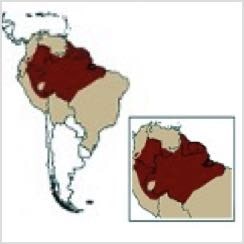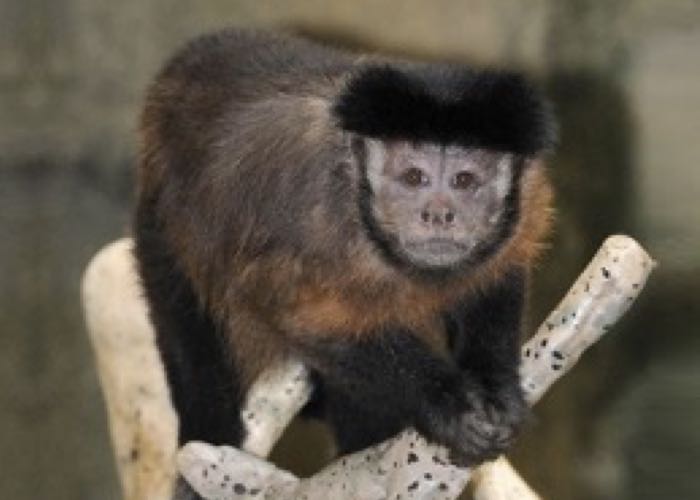Capuchin Monkey
Cebus paella
Conservation Status:
Characteristics:
- They range in color from light brown to black.
- Shoulders and underbelly are lighter than the rest of their body.
- There is a patch of black fur (a cap) on the crown of their head.
Lifespan: Wild capuchins can live 15-25 years. In captivity, they can live 50 plus years.
Range and Habitat:
- Moist, subtropical or tropical forests.
- Also occupy dry forest, gallery forest, disturbed and secondary forest.
- East of the Andes Mountains from Columbia and Venezuela to Paraguay and northern Argentina.

Diet:
- Capuchins are omnivores.
- They eat nuts, fruits, seeds and buds.
- In addition, they eat insects, spiders, birds’ eggs and small vertebrates.
- Those living near water will also eat crab and shellfish.
Behavior:
- Diurnal and aboreal
- Social animals that live in groups of 8 to 15 animals.
- Males leave the group at maturity, so the care members are females which typically spend their lives with the same group.
Fun Facts:
- Capuchin monkeys were named because they look like tiny Spanish Capuchin monks with their white faces and dark brown “robes” and “hoods” on their heads.
Keeper Notes:
Zephyr, our dark brown female, was born in captivity in 1987. Jose, the larger brown male, was born in 1994. Zephyr arrived in 2014 on loan from the Brookfield Zoo in Chicago, Illinois. Jose lived the first 24 years of his life as a laboratory animal. He is now enjoying retirement at the Ochsner Park Zoo. They can have outside access when the temperature is above 40 degrees and can be viewed daily in the glassed area. Their favorite foods include hard boiled eggs, avocado, applesauce, apples, and any birds they can catch. They enjoy spending much of their time outdoors sitting in their hammocks.

